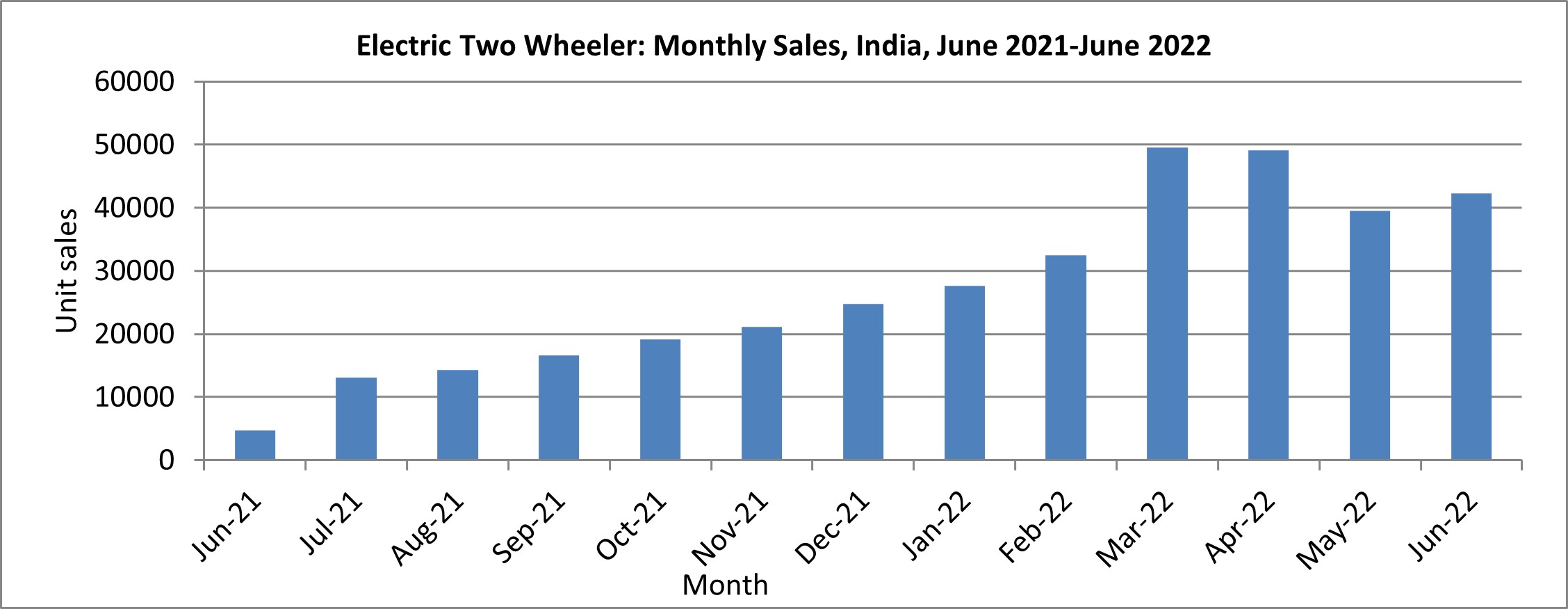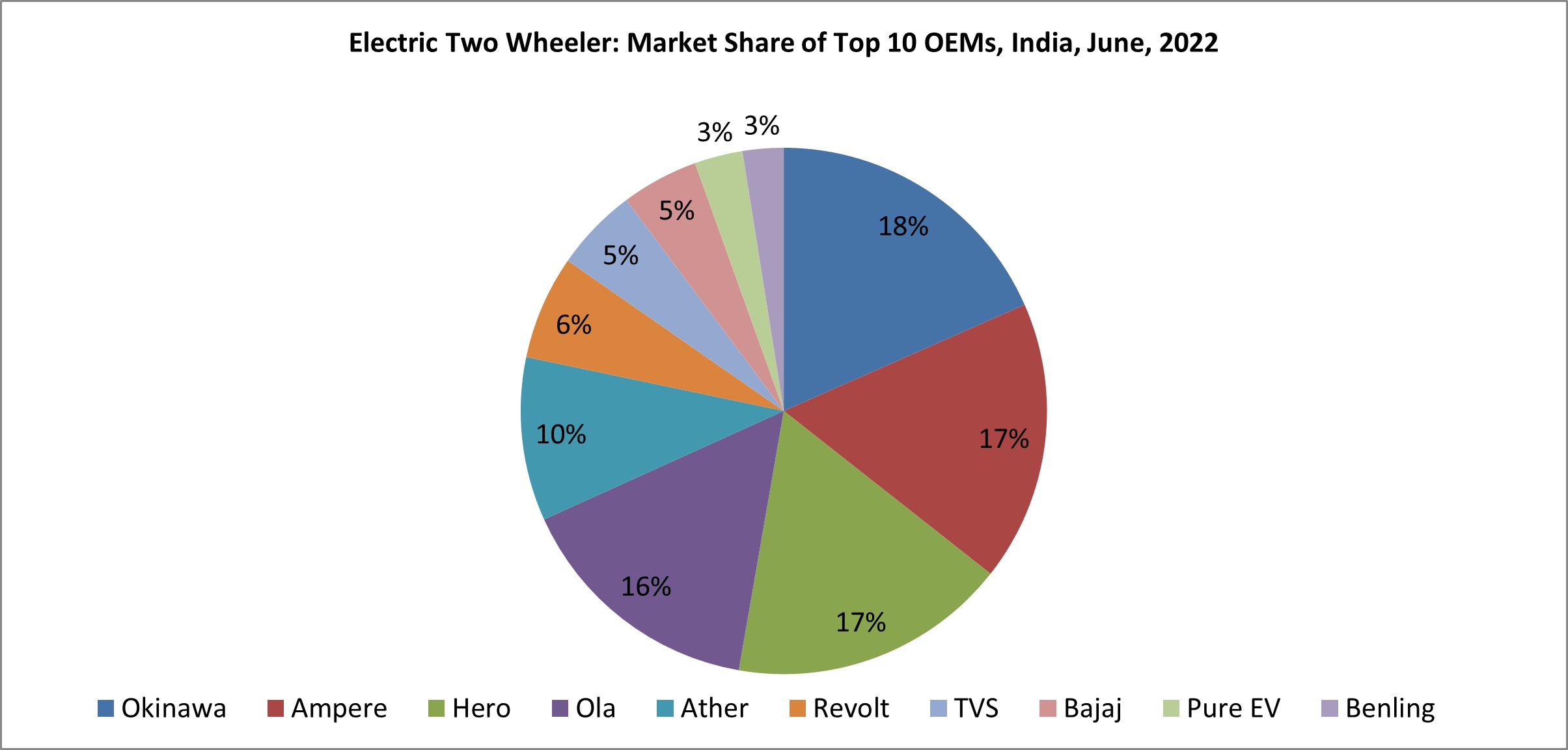From the launch of its first electric scooter in the Indian market in August 2021 to the planned introduction of an all-electric sedan in 2023, Ola Electric is thinking big and bold. Driven by the vision of an e-mobility future, it is setting up the world’s largest two-wheeler manufacturing facility – the Futurefactory – near Krishnagiri in Tamil Nadu, with a projected annual manufacturing capacity of 10 million two-wheelers and one million four-wheelers.
The latest news is that the company has developed an indigenously produced lithium-ion battery cell NMC 2170 and will be backing this with a $100 million investment in battery cell R&D. This ties into Ola Electric’s larger strategy of positioning India as a global electric two-wheeler hub. The company plans to begin commercial production of its li-ion battery cells at its Gigafactory by 2023.
For more information, please access our research reports – Global Two-Wheeler Outlook, 2022 and Global Electric Two-wheeler OEM Strategies and Growth Opportunities or contact Sathyanarayana Kabirdas at sathyanarayanak@frost.com for information on a private briefing.

Source: Frost & Sullivan,2022
Our Perspective
Ola Electric has spoken of its locally manufactured li-ion battery cell initiative as part of a long-term vision to help build a strong e-mobility ecosystem in the country and, eventually, establish India as a global electric vehicle (EV) hub. The ability to develop batteries in-house is seen as critical to achieving scale, driving innovation, and making electric offerings more affordable and accessible. There is also the matter of cost. The company’s electric scooters are currently equipped with battery cells sourced from LG Chem in South Korea. Cost savings of nearly 30% are likely to accrue from the shift to the in-house production of battery cells.

Source: Frost & Sullivan, 2022
Notably, Ola was allocated with 20GWh capacity under the Indian government’s Advanced Chemistry Cell Production Linked Incentive (PLI) scheme earlier this year to boost domestic manufacturing of battery cells, battery supply chain and attract Foreign Direct Investment (FDI). Local mass production of EV batteries is expected to promote and accelerate electric two- and three-wheeler battery charging solutions such as battery swapping stations.
“As disrupting technologies and business models spur overall growth, the collaboration will become an increasingly important part of the two-wheeler industry. Ola Electric’s new capabilities in battery cell manufacturing will drive new partnerships while accelerating the transition from ICE powertrains to electric equivalents.” – Shraddha Manjrekar, Industry Analyst, Mobility Practice at Frost & Sullivan.
Our Global Two-Wheeler Outlook, 2022 highlights that business diversification—into battery solutions and last-mile delivery, among others—will emerge as a key strategy for OEMs while opening new revenue streams for them. Another of our top predictions is that manufacturers will focus on improving battery management systems and battery technology. Here, Ola Electric’s li-ion battery cell technology is touted to have higher cell energy densities and enhanced lifecycle. In essence, then, both our predictions have been borne out.
We believe that Ola Electric’s vertical integration strategy will give it a competitive edge; advanced battery cell development capabilities will support greater organizational and strategic flexibility in what is a highly disruptive market while reducing its dependence on external suppliers. It will also strengthen the company’s ambitions to penetrate global markets, with reports indicating that it will target leading two-wheeler markets in France, Germany, and Italy.
If it succeeds, Ola Electric’s business model could be a template for other electric two-wheeler manufacturers to emulate: driving profit by developing the entire e-mobility ecosystem using a vertically integrated business approach.
Schedule your Growth Pipeline Dialog™ with the Frost & Sullivan team to form a strategy and act upon growth opportunities: https://frost.ly/60o.




